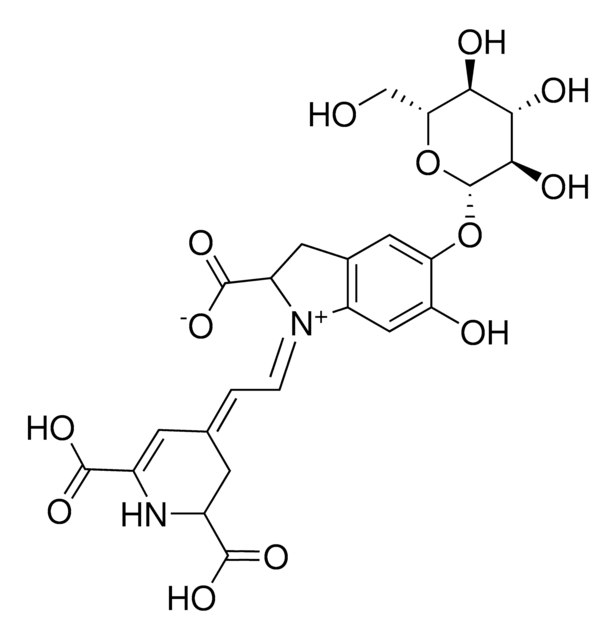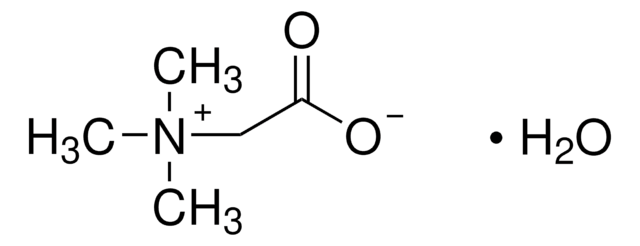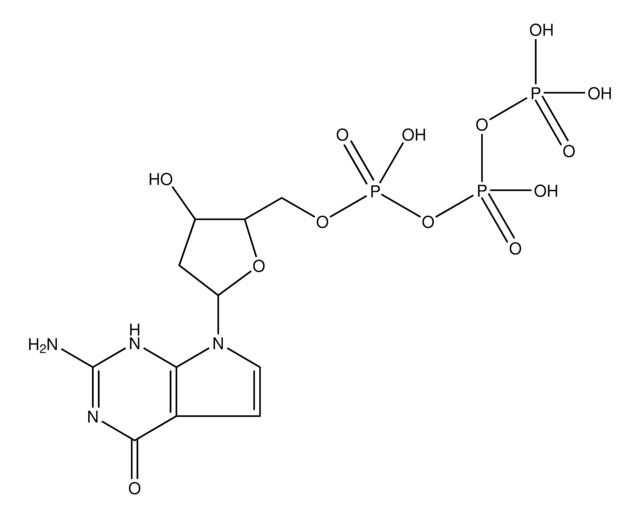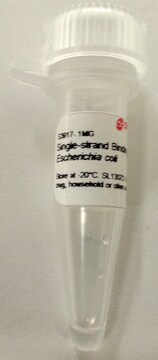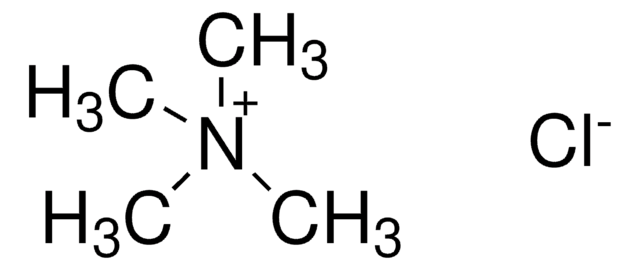Kluczowe dokumenty
B0300
Betaine solution
5 M, PCR Reagent
Synonim(y):
TMG, trimetyloglicyna
About This Item
Polecane produkty
Poziom jakości
Formularz
liquid
opakowanie
vial of 1.5 mL
stężenie
5 M
metody
PCR: suitable
kolor
colorless
Zastosowanie
agriculture
obecność zanieczyszczeń
DNase, RNase, none detected
temp. przechowywania
2-8°C
ciąg SMILES
C[N+](C)(C)CC([O-])=O
InChI
1S/C5H11NO2/c1-6(2,3)4-5(7)8/h4H2,1-3H3
Klucz InChI
KWIUHFFTVRNATP-UHFFFAOYSA-N
Szukasz podobnych produktów? Odwiedź Przewodnik dotyczący porównywania produktów
Opis ogólny
Zastosowanie
- loop-mediated isothermal amplification (LAMP) reactions
- polymerase chain reaction for genomic DNA amplification
- quantitative polymerase chain reaction (qPCR) for telomere length analysis
- in the PCR amplification of CGG repeats in the genomic DNA
- reverse-transcription loop-mediated isothermal amplification (RT-LAMP) to detect severe acute respiratory syndrome coronavirus 2 (SARS-CoV-2)
- PCR amplification of DNA-directed RNA polymerase II largest subunit (RPB2)
- reverse transcription during library preparation using Smartseq2
Opakowanie
Kod klasy składowania
12 - Non Combustible Liquids
Klasa zagrożenia wodnego (WGK)
WGK 1
Temperatura zapłonu (°F)
Not applicable
Temperatura zapłonu (°C)
Not applicable
Wybierz jedną z najnowszych wersji:
Certyfikaty analizy (CoA)
Nie widzisz odpowiedniej wersji?
Jeśli potrzebujesz konkretnej wersji, możesz wyszukać konkretny certyfikat według numeru partii lub serii.
Masz już ten produkt?
Dokumenty związane z niedawno zakupionymi produktami zostały zamieszczone w Bibliotece dokumentów.
Klienci oglądali również te produkty
Protokoły
Protocol for high fidelity amplification of long PCR fragments up to 22kb from complex DNA mixtures and up to 40kb from simple DNA mixtures. AccuTaq LA.
Method for bacterial genome analysis and detection of pathogens. Minimize false positive PCRs through lab design and reagents tested for use in bacterial PCR applications.
Protocol for high fidelity amplification of long PCR fragments up to 22kb from complex DNA mixtures and up to 40kb from simple DNA mixtures. Red dye allows direct loading of reaction on a gel. REDAccuTaq LA
Protokół REDAccuTaq LA oferuje wysoką wierność amplifikacji długich fragmentów PCR z możliwością bezpośredniego ładowania żelu.
Nasz zespół naukowców ma doświadczenie we wszystkich obszarach badań, w tym w naukach przyrodniczych, materiałoznawstwie, syntezie chemicznej, chromatografii, analityce i wielu innych dziedzinach.
Skontaktuj się z zespołem ds. pomocy technicznej


